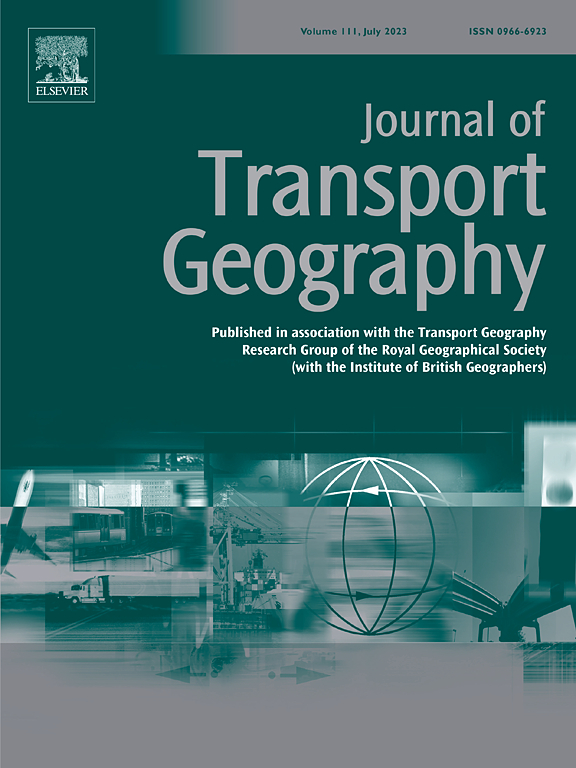影响雅加达都市圈通勤线路客流量的城市环境因素
IF 6.3
2区 工程技术
Q1 ECONOMICS
引用次数: 0
摘要
作为世界上人口第四多的国家中最大的大都市区,印度尼西亚的雅加达大都市区(JMA)拥有超过3000万在该地区从事城际流动的公民。包括地面轨道交通在内的通勤线路是最古老的公共交通运营模式,也是通勤者最常使用的公共交通方式。同时,我们正在建设捷运和轻轨走廊,以提高通勤人员的流动性。以往的研究一致表明,建成环境对轨道交通客流量有显著影响,突出了这种模式在大都市地区的重要作用,并为公交导向发展(transit - oriented Development, TOD)奠定了基础。然而,在JMA的背景下,没有先例。考虑到通勤线路和规划在大都市地区轨道交通发展中的重要性,以及车站周围的建成环境在塑造乘客模式方面的关键作用,在本研究中,我们利用地点回顾探讨了建成环境和乘客感知对JMA工作日和周末通勤线路乘客的影响。Lasso回归分析表明,住宅用地类型的影响存在差异,而与网约车和摩托车停车的整合,以及车站的比率和评论情绪,与基于轨道的模式的客流量有显著关系。我们的研究结果表明,在JMA中,建成环境和乘客对车站区域的感知在产生轨道交通客流量方面都起着重要作用。这些发现强调,在现有和新建轨道交通系统的未来发展中,需要考虑这些特征。本文章由计算机程序翻译,如有差异,请以英文原文为准。
Urban environmental factors influencing commuter line ridership in the Jakarta Metropolitan Area, Indonesia
As the biggest metropolitan area in the fourth most populous country in the world, the Jakarta Metropolitan Area (JMA) in Indonesia is home to more than 30 million citizens who engage in intercity movement within the region. Commuter lines, comprising on-ground rail transit, are the oldest operating mode of public transportation and the most-used public transportation mode by commuters, while corridors of mass rapid transit (MRT) and light rapid transit (LRT) are being built to enhance commuter mobility. Previous studies have consistently demonstrated that the built environment significantly influences rail transit ridership, highlighting the important role of this mode in metropolitan areas and forming the basis for Transit-Oriented Development (TOD). However, no precedents have been made in the context of JMA. Considering the significance of commuter lines and plans regarding rail transit development in the metropolitan area, as well as the critical role of the built environment around stations in shaping ridership patterns, in this study we explore the influence of the built environment as well as rider perception on the weekday and weekend commuter line ridership in the JMA using place review. Lasso regression analysis showed that the impacts of residential land use types differ, while integration with ride-hailing and motorbike parking, as well as the rate and review sentiments of the station, have significant relationships with ridership count for the rail-based modes. Our results suggest that both the built environment and rider perceptions of station areas play important roles in generating rail transit ridership in the JMA. These findings emphasise the need to consider such characteristics during the future development of currently available and newly built rail transit systems.
求助全文
通过发布文献求助,成功后即可免费获取论文全文。
去求助
来源期刊

Journal of Transport Geography
Multiple-
CiteScore
11.50
自引率
11.50%
发文量
197
期刊介绍:
A major resurgence has occurred in transport geography in the wake of political and policy changes, huge transport infrastructure projects and responses to urban traffic congestion. The Journal of Transport Geography provides a central focus for developments in this rapidly expanding sub-discipline.
 求助内容:
求助内容: 应助结果提醒方式:
应助结果提醒方式:


